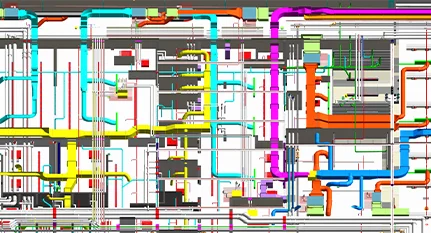
Construction project planning and execution have been completely revolutionized by the revolutionary technology known as Building Information Modeling (BIM) Clash Detection. Before construction even starts, BIM Clash Detection finds possible conflicts and confrontations between various building systems, components, and elements by using complex software algorithms and cutting-edge 3D modeling technology.
The capacity of BIM Clash Detection to spot conflicts and clashes early in the design process is one of its main advantages. Designers, engineers, and contractors may see how various pieces interact with one another by using BIM Clash Detection to create a virtual 3D model that faithfully depicts the building’s geometry and systems. Early conflict detection reduces costly mistakes and rework during construction, saving time and money.
By offering a centralized platform for information sharing and dispute resolution, BIM Clash Detection encourages improved coordination and collaboration amongst project stakeholders. Working together in real time, designers, engineers, contractors, and subcontractors can resolve conflicts and alter the design as needed. The likelihood of misunderstandings and delays is decreased thanks to this collaborative approach, which guarantees that everyone is on the same page throughout the project lifespan.
BIM Clash detection eventually results in increased project efficiency by optimizing coordination and reducing errors. Contractors can move on with confidence knowing that the design has been carefully examined and optimized, as there will be fewer conflicts to resolve during construction. Shorter project timeframes, more efficient building procedures, and better project outcomes all stem from this.
Cost Savings and Risk Mitigation: BIM Clash Detection, maybe most significantly, aids in cost savings and risk mitigation related to clashes and conflicts. Project teams can proactively address possible concerns before they become costly problems during construction by detecting them early on. In the end, a more successful project delivery is achieved by this proactive strategy, which not only saves money but also lessens the possibility of project delays and disagreements.

